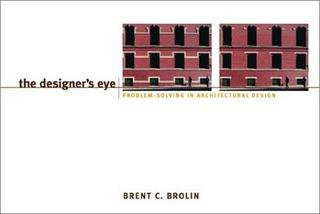Since my dissertation is in part concerned with moral skepticism (MS), I thought I would share some of the arguments for MS that I've collected. (Which is not to say that I agree with them: if you must know, I think all of the arguments below are flawed.) Please contribute any additional arguments that you can think of.
First, many have argued that there are not any moral facts on the grounds that moral disagreement is widespread and ineliminable, even among rational inquirers. This claim, when combined with commitment to a Piercean conception of the facts as that which rational inquirers would ultimately converge in judgment upon, implies that there aren’t any moral facts.
A second argument for MS begins with a commitment to the view, famously held by Samuel Alexander, that something exists if and only if it is causally efficacious. When a commitment to this view is combined with reasons to doubt the causal efficacy of putative moral facts (e.g., because everything that they are thought to cause can be explained in non-moral terms), MS follows.
A third argument arises from reflection on the apparent truism that moral demands are categorical, in the sense that moral demands provide agents with reasons for action irrespective of their own pre-existing desires or inclinations. When acceptance of a suitably robust form of this truism is combined with acceptance of a less-obvious theory of reasons for action—such as the view that reasons for action must make essential reference to an agent’s pre-existing desires—then skepticism about the very possibility of moral demands follows, since nothing can give us categorical reasons for action.
A fourth argument begins with the observation that moral judgments are essentially practical: that is, the observation that a sincere avowal of a moral judgment is internally connected to action. When this internal connection between judgment and action is accounted for in terms derived from Hume’s philosophy of mind and action, MS follows. The first step in this Humean argument is the claim that there are two, fundamentally distinct (i.e., independently intelligible), sorts of states of mind: beliefs and desires. Beliefs are cognitive, in the strict sense that they only aim to represent facts in the world. Desires, on the other hand, are affective, in the sense that they move us to act, regardless of how the world as a matter of fact is. The second step in this argument is to note that for a judgment to be essentially practical, it cannot (merely) contain beliefs, since they, in themselves, are motivationally inert. Thus, moral judgments must really be expressions of desires, since that’s the only way to explain their internal connection to action. The third step is to note that since moral judgments are really just expressions of desires, and desires are essentially non-cognitive (i.e., non-representational), the very idea of moral facts turns out to be an illusion, a wheel that turns nothing.
A fifth argument first begins with an appreciation of the conclusion of G. E. Moore’s infamous “Open Question Argument”, which claims that moral goodness is irreducible to any natural property. When an appreciation of this conclusion is combined with a commitment to naturalism, the metaphysical view that there are no non-natural properties, MS is the surprising, un-Moorean result.
A sixth argument begins with an acceptance of R. M. Hare’s claim that it is a conceptual truth about moral judgments that they supervene on non-moral descriptive judgments (i.e., that it is criterial of competence with moral concepts that one refrain from judging two events to be identical in non-moral terms, but different in moral terms). Acceptance of this conceptual truth creates a problem for believers in moral facts, because it looks especially difficult for them to explain why there is this tight connection between non-moral states of affairs and moral states of affairs (unless they claim that moral states of affairs are reducible to non-moral states of affairs, which anyone moved by Moore "Open Question Argument" will deny). For those who do not believe in moral facts, on the other hand, there is no problem with accepting Hare’s conceptual truth, since they can explain this tight connection between moral judgments and the non-moral facts by claiming that moral judgments are stable affective responses to the non-moral facts, where our practical need for these affective responses to be stable (i.e., consistent) explains the tight connection.
A seventh argument for MS begins by drawing a distinction between two types of representations: (i) perspectival representations, i.e., representations whose content reflects something about the agent doing the representing, and (ii) absolute representations, i.e., representations whose content does not reflect anything about the agent doing the representing. It then places moral judgments on the side of perspectival representations, in virtue of their internal connection to action. If this view of moral judgments is combined with a commitment to both the view that perspectival moral judgments are not reducible to any sort of absolute representations and to the view that although there is such a distinction within representations, there is no such distinction within what is represented—since representations, as such, are about what is there anyway, independent of us and anyone else—then MS follows, since there are, strictly speaking, no perspectival facts (e.g., moral facts) for perspectival representations to represent.
A final argument for MS begins with the observation that God is dead. When this observation is combined with the view, widely held outside of philosophy, that moral values derive from God (as President Bush put it, “We need common-sense judges who understand our rights were derived from God.”), then MS follows.
















